
It is possible that we still have it with our suppliers but the price could be different from before.
Feel free to order. We will verify availability and inform you promptly.

Safe Payment
We accept Paypal, Money Transfer, Bank Transfer
Confidence
Protection covers your purchase and personal data.
Worldwide Delivery
We ship Worldwide, except Russia.Shipping cost US$25.2 for upto 0.5 kgs

Hotline
Talk to help line for your question on 9841267335this item is sold
Mayer (1996) contests Boord's assertion, pointing out that eminent Sanskritists such as Sakya Pandita employed Vajrakīlaya Further, he argues:
it is possible, on the other hand, that the name Vajrakīlaya as favoured by the Tibetans could in fact have been the form that was actually used in the original Indic sources, and that there is no need to hypothesize a correct form Vajrakīla". "Vajrakīlaya" could have come from the second person singular active, causative imperative, of the verb Kīl. Indigenous grammar (Pāṇini Dhātupāṭha I.557) gives to Kīl the meaning of bandha, i.e. "to bind", while Monier-Williams (285) gives the meanings "to bind, fasten, stake, pin". Hence the form kīlaya could mean "you cause to bind/transfix!", or "bind/transfix!". This, taken from mantras urging "bind/transfix", or "may you cause to bind/transfix", might have come to be treated as a noun; and the noun might then have become deified; hence Kīlaya might have started out as a deified imperative, in some ways comparable to the famous example of the deified vocative in the name Hevajra, and a not unheard of phenomenon in Sanskrit tantric literature. This suggestion is supported by Alexis Sanderson, a specialist in Sanskrit tantric manuscripts whom I consulted on this problem.[3]
Like the majority of traditional Tibetan metal instruments, the kīla is often made from brass and iron (terrestrial and/or meteoric iron. 'Thokcha' (Tibetan: ཐོག་ལྕགས, Wylie: thog lcags) means "sky-iron" in Tibetan and denote tektites and meteorites which are often high in iron content. Meteoric iron was highly prized throughout the Himalaya where it was included in sophisticated polymetallic alloys such as Panchaloha for ritual implements. The pommel of the kīla often bears three faces of Vajrakīla, one joyful, one peaceful, one wrathful, but may bear the umbrella of the ashtamangala or mushroom cap, ishtadevata (like Hayagriva), snow lion, or stupa, among other possibilities. The handle is often of a vajra, weaving or knotwork design. The handle generally has a triune form as is common to the pommel and blade. The blade is usually composed of three triangular facets or faces, meeting at the tip. These represent, respectively, the blade's power to transform the negative energies known as the "three poisons" or "root poisons" (Sanskrit: mula klesha) of attachment/craving/desire, delusion/ignorance/misconception, and aversion/fear/hate.
The kīla is one of many iconographic representations of divine "symbolic attributes" (Tibetan: phyag mtshan)of Vajrayana and Hindu deities. When consecrated and bound for usage,[8] the kīla are a nirmanakaya manifestation of Vajrakīlaya.
Chandra, et al. (1902: p. 37) in their Dictionary entry 'korkor' (Tibetan: ཀོར་ཀོར, Wylie: kor kor) "coiled" (English) relates that the text titled the 'Vaidūry Ngonpo' (Tibetan: བཻ་དཱུརྱ་སྔོན་པོ, Wylie: bai dUry sngon po) has the passage: ཐག་བ་ཕུར་བ་ལ་ཀོར་ཀོར་བྱམ "a string was wound round the (exorcist's) dagger [phurba]."
One of the principal methods of working with the kīla and to actualize its essence-quality is to pierce the earth with it; sheath it; or as is common with Himalayan shamanic traditions, to penetrate it vertically, point down into a basket, bowl or cache of rice (or other soft grain if the kīla is wooden).] The terms employed for the deity and the tool are interchangeable in Western scholarship. In the Himalayan shamanic tradition the kīla may be considered as axis mundi that for the majority of Nepalese shaman, the kīla is cognate with the world tree, either in their visualizations or in initiatory rites or other rituals.
The kīla is used as a ritual implement to signify stability on a prayer ground during ceremonies, and only those initiated in its use, or otherwise empowered, may wield it. The energy of the kīla is fierce, wrathful, piercing, affixing, transfixing. The kīla affixes the elemental process of 'Space' (Sanskrit: Ākāśa) to the Earth, thereby establishing an energetic continuum. The kīla, particularly those that are wooden are for shamanic healing, harmonizing and energy work and often have two nāgas(Sanskrit for snake, serpent and/or dragon, also refers to a class of supernatural entities or deities) entwined on the blade, reminiscent of the Staff of Asclepius and the Caduceus of Hermes. Kīla often also bear the ashtamangala, swastika, sauwastika and/or other Himalayan, Tantric or Hindu iconography or motifs.
As a tool of exorcism, the kīla may be employed to hold demons or thoughtforms in place (once they have been expelled from their human hosts, for example) in order that their mindstream may be re-directed and their inherent obscurations transmuted. More esoterically, the kīla may serve to bind and pin down negative energies or obscurations from the mindstream of an entity, person or thoughtform, including the thoughtform generated by a group, project and so on, to administer purification.
The kīla as an iconographical implement is also directly related to Vajrakilaya, a wrathful deity of Tibetan Buddhism who is often seen with his consort Diptacakra (Tib. 'khor lo rgyas 'debs ma). He is embodied in the kīla as a means of destroying (in the sense of finalising and then freeing) violence, hatred, and aggression by tying them to the blade of the kīla and then transmuting them with its tip.[citation needed] The pommel may be employed in blessings. It is therefore that the kīla is not a physical weapon, but a spiritual implement, and should be regarded as such. The kīla often bears the epithet Diamantine Dagger of Emptiness.
The magic of the Magical Dagger comes from the effect that the material object has on the realm of the spirit. The art of tantric magicians or lamas lies in their visionary ability to comprehend the spiritual energy of the material object and to willfully focus it in a determined direction . The tantric use of the phurba encompasses the curing of disease, exorcism, killing demons, meditation, consecrations (puja), and weather-making. The blade of the phurba is used for the destruction of demonic powers. The top end of the phurba is used by the tantrikas for blessings.
Transfixing kīla , charnel ground, scorpion and Padmasambhava:
The sting of the scorpion's whip-like tail transfixes and poisons its prey, and in this respect it is identified with the wrathful activity of the ritual dagger or kīla. Padmasambhava's biography relates how he received the siddhi of the kīla transmission at the great charnel ground of Rajgriha from a gigantic scorpion with nine heads, eighteen pincers and twenty-seven eyes. This scorpion reveals the kīla texts from a triangular stone box hidden beneath a rock in the cemetery. As Padmasambhava reads this terma text spontaneous understanding arises, and the heads, pincers, and eyes of the scorpion are 'revealed' as different vehicles or yanas of spiritual attainment. Here, at Rajgriha, Padmasambhava is given the title of 'the scorpion guru', and in one of his eight forms as Guru Dragpo or Pema Drago ('wrathful lotus'), he is depicted with a scorpion in his left hand. As an emblem of the wrathful kīla transmission the image of the scorpion took on a strong symbolic meaning in the early development of the Nyingma or 'ancient school' of Tibetan Buddhism...".
To work with the spirits and deities of the earth, land and place, indigenous people of India, the Himalayas and the Mongolian Steppe pegged, nailed and/or pinned down the land. The nailing of the kīla is comparable to the idea of breaking the earth (turning the sod) in other traditions and the rite of laying the foundation stone. It is an ancient shamanic idea that has common currency throughout the region; it is prevalent in the Bon tradition and is also evident in the Vajrayana tradition. According to shamanic folklore current throughout the region, "...the mountains were giant pegs that kept the Earth in place and prevented it from moving." Mountains such as Amnye Machen, according to folklore were held to have been brought from other lands just for this purpose. Stupa (compare cairn) are a development of this tradition and akin to kīla.
"Prayer flags and stone pillars throughout the country also pierce the land. Even the pegs of the nomad's yak wool tents are thought of as sanctifying the ground that lies beneath...".
Traditions such as that of the kīla may be considered a human cultural universal in light of foundation stone rites and other comparable rites documented in the disciplines of anthropology and ethnography; e.g., turning of the soil as a placation and votive offering to spirits of place and to preparation of the land as a rite to ensure fertility and bountiful yield.
Traditional lineage usage: anthology of case studies
In the Kathmandu Valley, the kīla is still in usage by shamans, magicians, tantrikas and lamas of different ethnic backgrounds. The kīla is used particularly intensively by the Tamang, Gurung and Newari Tibeto-Burmese tribes. The kīla is also employed by the Tibetans native to Nepal (the Bhotyas), the Sherpas, and the Tibetans living in Dharamasala chart the difference of the kīla traditions between the jhankris and the gubajus:
The phurbas of the gubajus are different from those of the jhankris. As a rule, they have only one head on which there is a double vajra as shown here. Gubajus focus on the head as a mirror image of themselves in order to meditatively connect with the power of the phurba. The three or more heads of the upper area of the phurba indicate the collection of energies that the jhankris use.
A "Bhairab kīla" is an important healing tool of the tantric Newari gubajus.
Tantric priests (guruju) use Bhairab phurbas for the curing of disease and especially for curing children's diseases. For these cases the point of the phurba blade is dipped into a glass or a bowl of water, turned and stirred. The sick child is then given the magically charged water as medicine to drink.(Mohan Rai is a shaman from the border area of Nepal and Bhutan and belongs to the Mongolian people of the Rai and/or Kirati. Mohan Rai is the founder of the Shamanistic Studies and Research Centre, Baniya Goun, Naikap, Kathmandu, Nepal) who in an interview is directly quoted as saying:
'Without the phurba inside himself [sic], the shaman has no consciousness'...'The shaman himself [sic] is the phurba; he [sic] assumes its form in order to fly into other worlds and realities.'
Therefore to extrapolate, the kīla is identified with consciousness and the root of sentience, the buddha-nature.
affirm that some Kukri may be considered kīla, as ultimately, everything that approximates a vertical form. The kīla then is a phallic polysemy and cognate with lingam ~ the generative instrument of Shiva that is metonymic of the primordial energy of the Universe. The kīla as lingam, actualizes the yoni essence-quality of whatever it penetrates.
The wrathful heruka Vajrakilaya is a meditation deity who embodies the energetic 'activity' of all the buddhas, manifesting in a powerful and wrathful yet compassionate form in order to subjugate the delusion and negativity that can arise as obstacles to the practice of Dharma.


![Buddhist Phurba Statue, [sold]](https://handicraftseller.com/uploads/pics/product/thumb/2009/06/3214.jpg)
 of Phurba,
of Phurba, 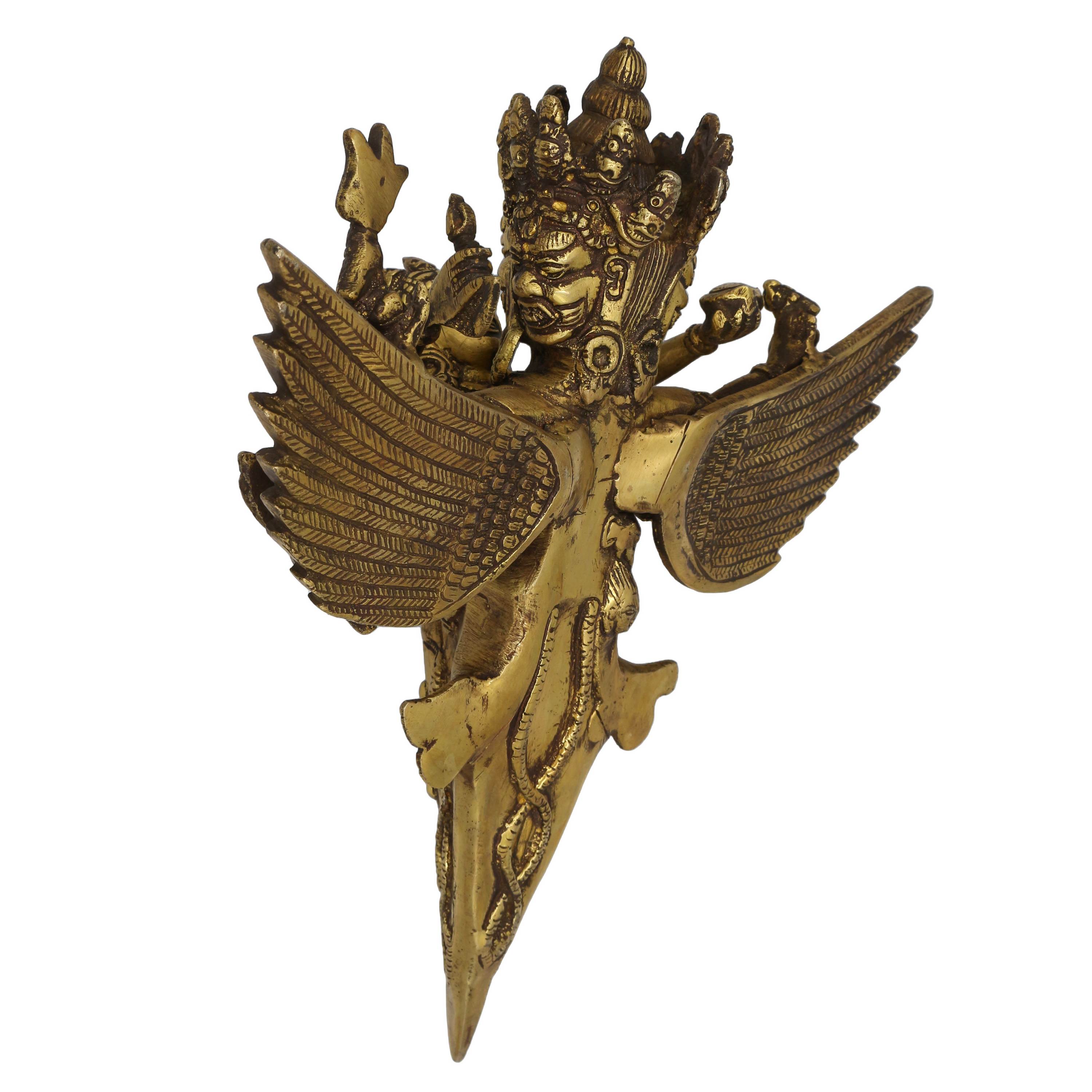 of Phurba,
of Phurba,  with Three Heads" title="Tindy Phurba Glossy
with Three Heads" title="Tindy Phurba Glossy 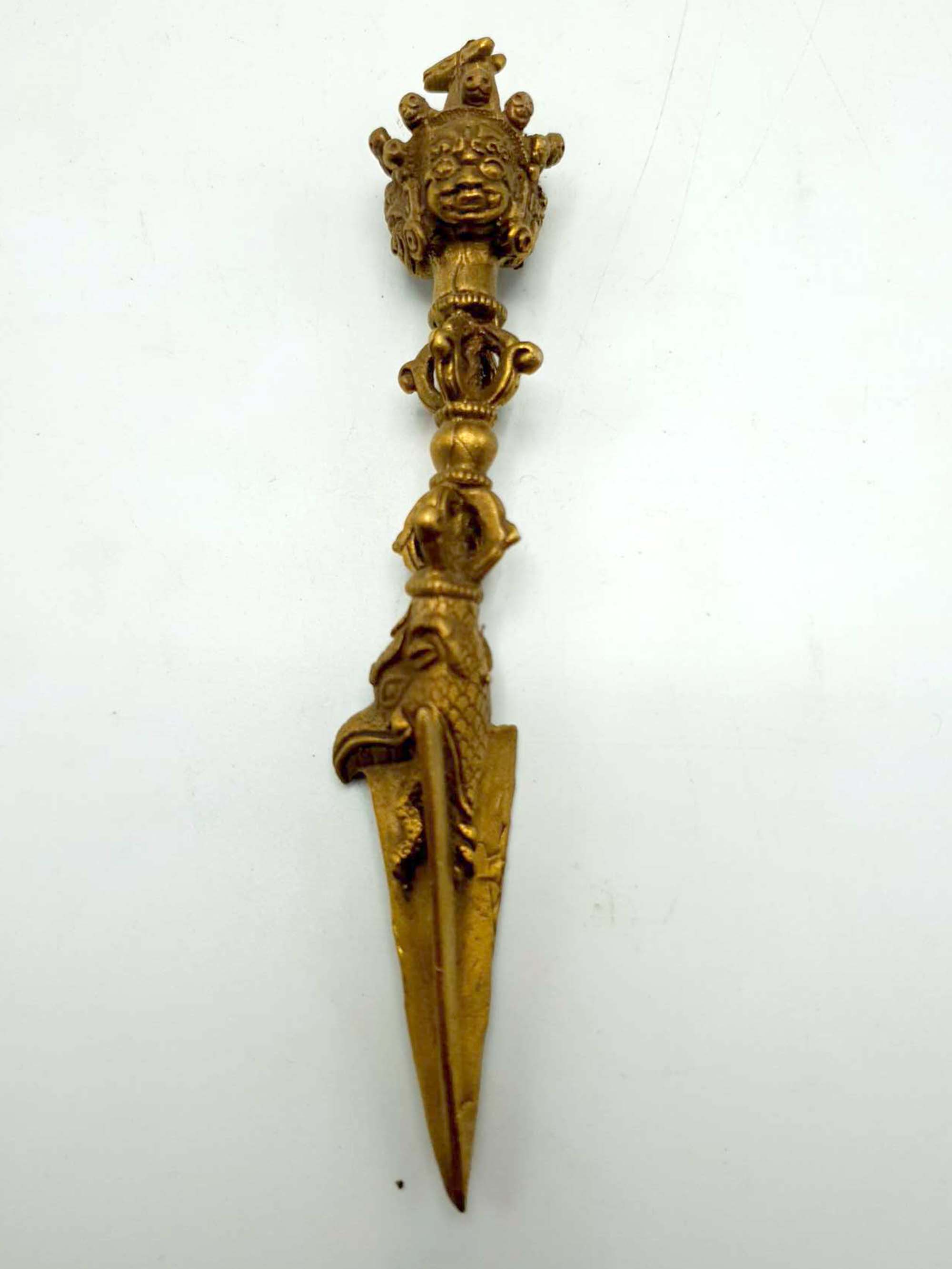 with Three Heads" title="Tindy Phurba Glossy
with Three Heads" title="Tindy Phurba Glossy  with Yamantaka Head Design,
with Yamantaka Head Design, 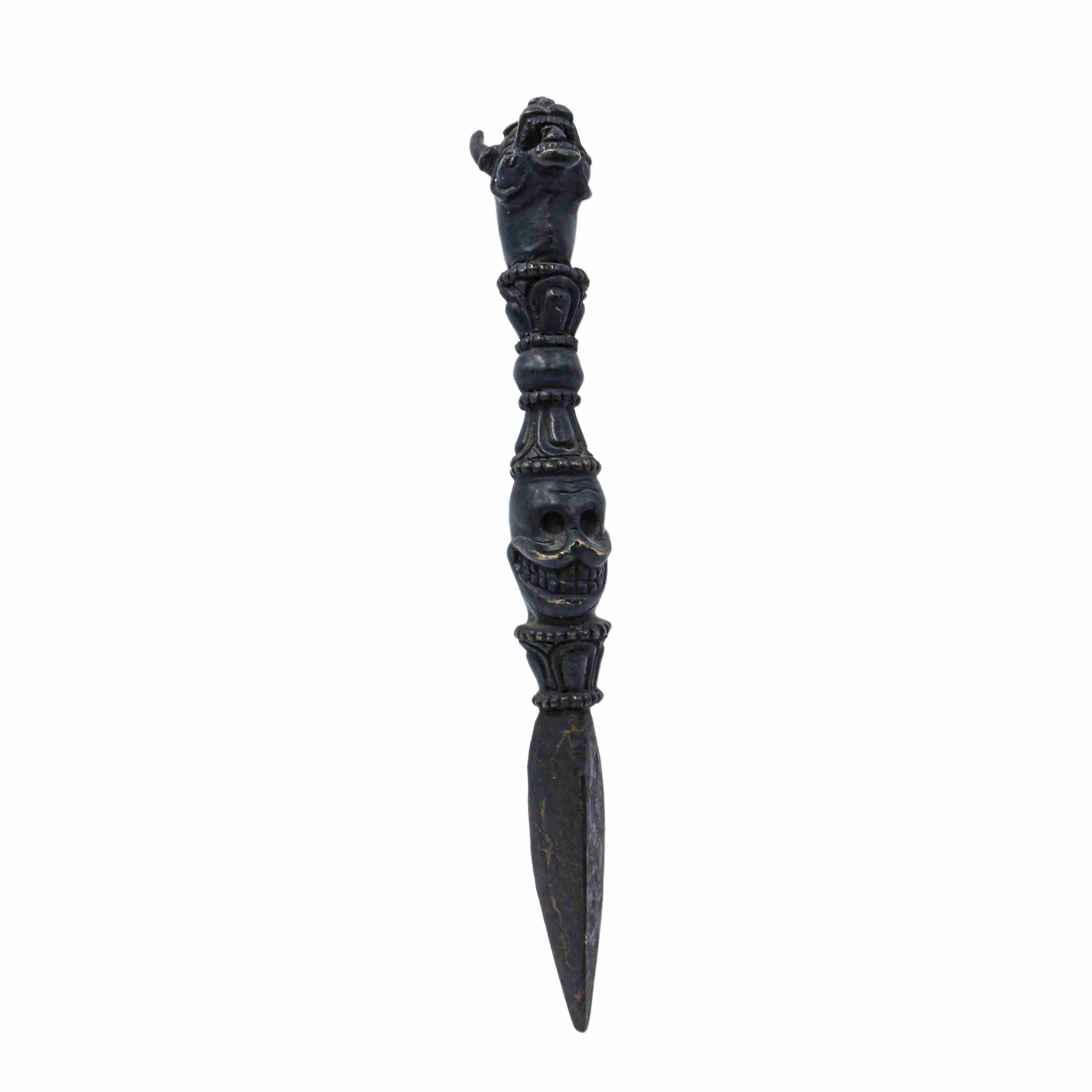 with Yamantaka Head Design,
with Yamantaka Head Design,  with Three Heads" title="Copper Phurba
with Three Heads" title="Copper Phurba 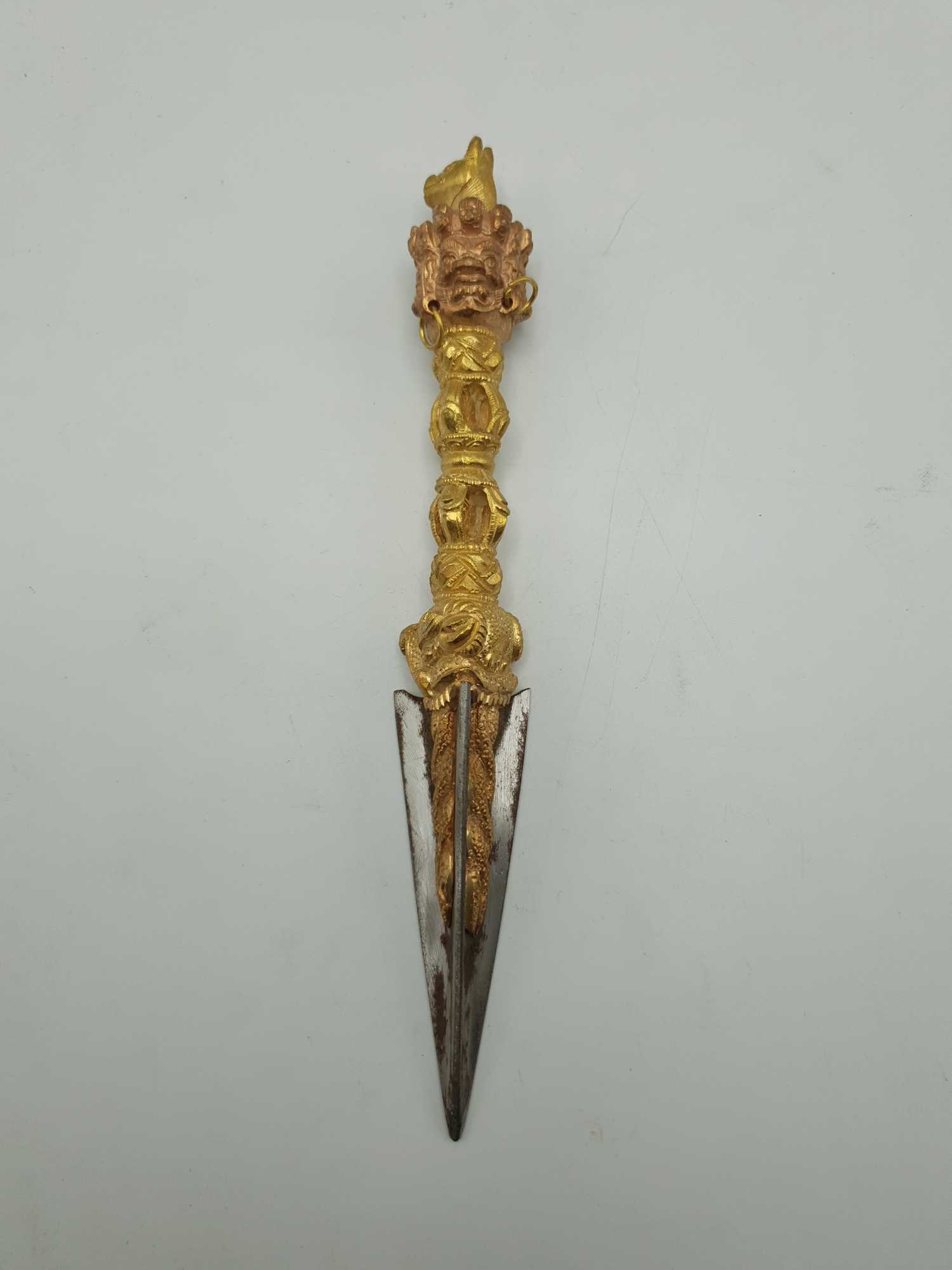 with Three Heads" title="Copper Phurba
with Three Heads" title="Copper Phurba  with Dorje
with Dorje  with Dorje
with Dorje  and Kartika
and Kartika 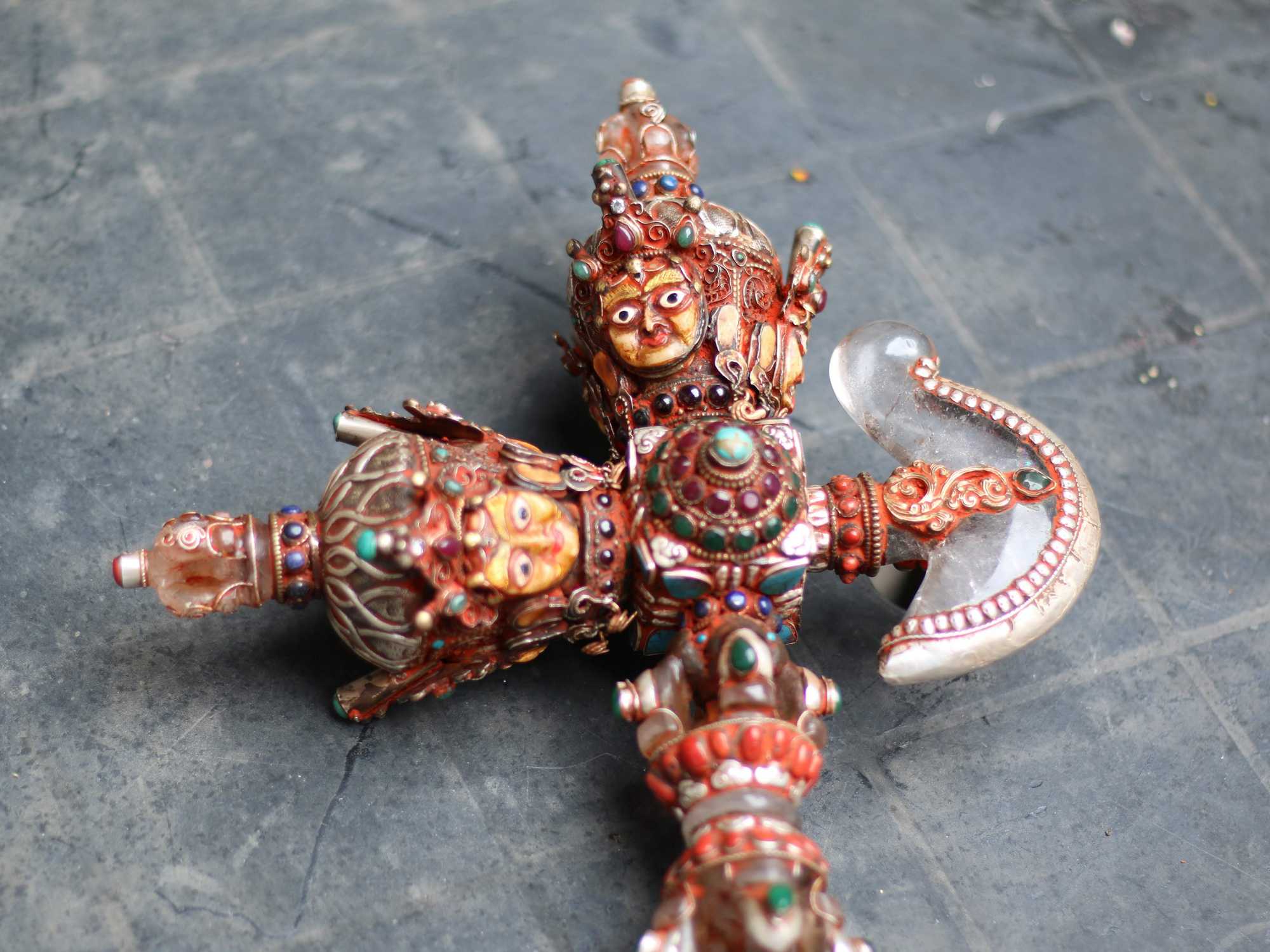 and Kartika
and Kartika  Phurba, Glossy Finish" title="Metal Phurba, Buddhist Handmade
Phurba, Glossy Finish" title="Metal Phurba, Buddhist Handmade  Phurba, Glossy Finish" title="Metal Phurba, Buddhist Handmade
Phurba, Glossy Finish" title="Metal Phurba, Buddhist Handmade  with
with 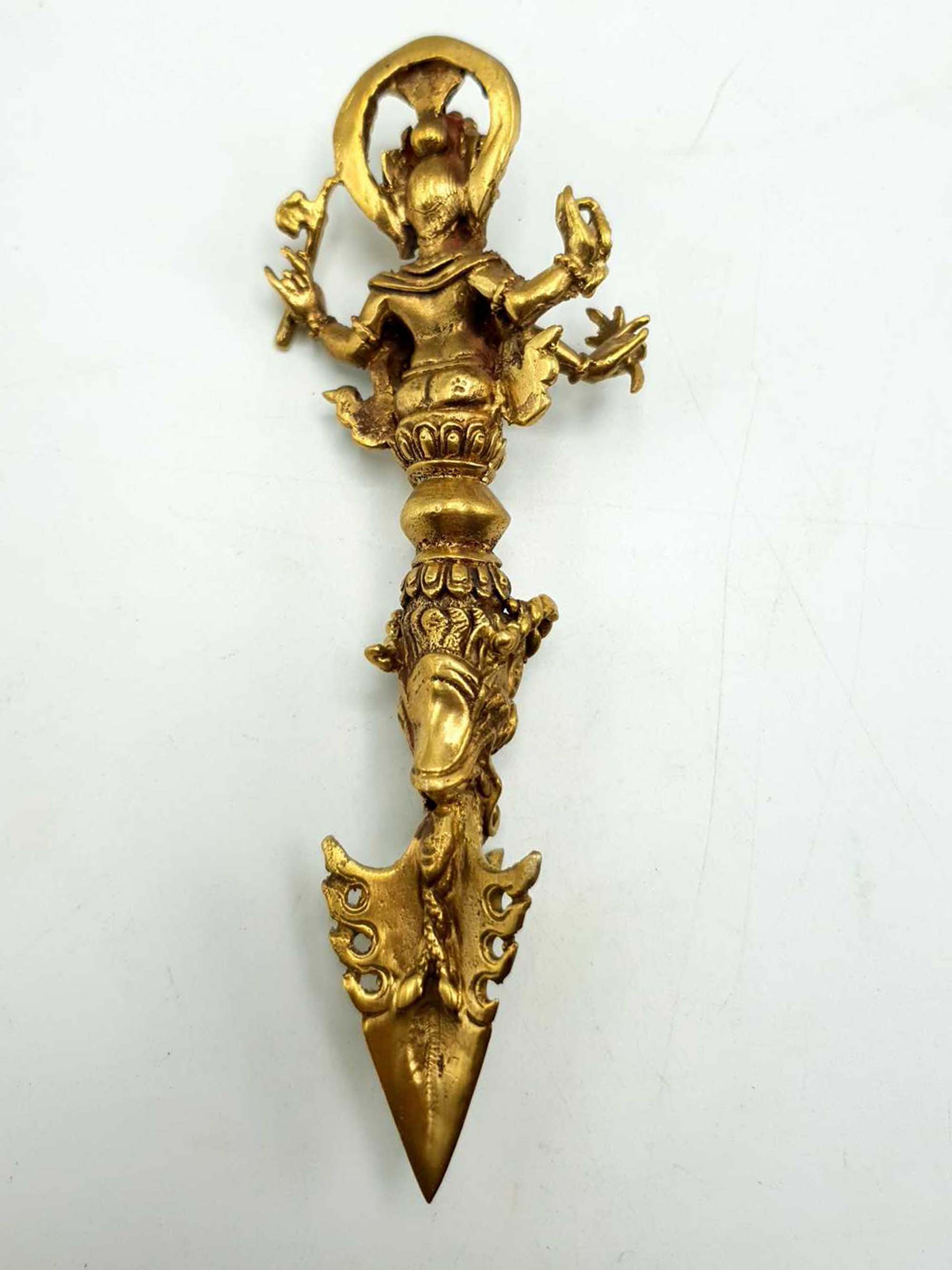 with
with 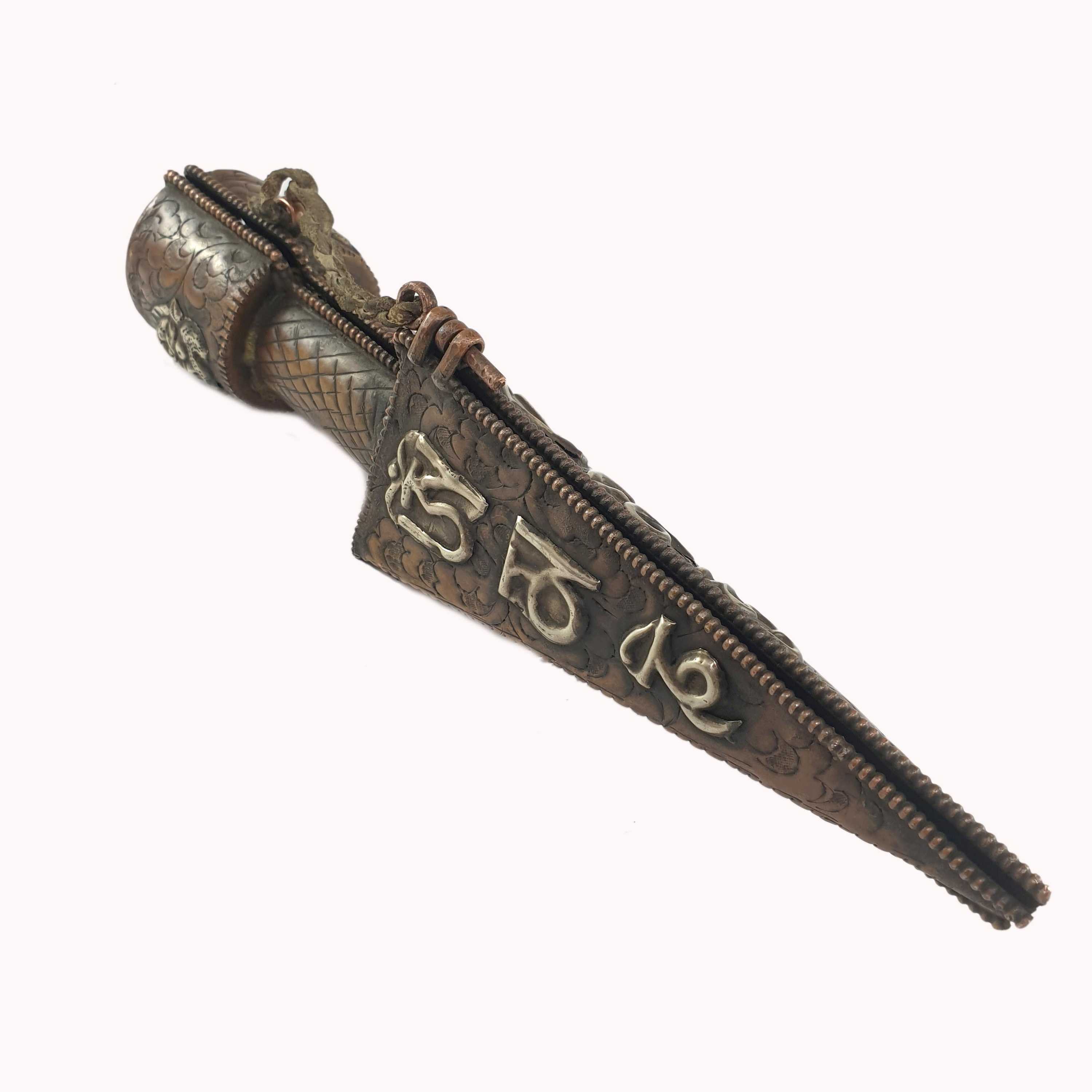 with Metal Cover" title="Tibetan Metal Vajrakilaya - Heruka Phurba
with Metal Cover" title="Tibetan Metal Vajrakilaya - Heruka Phurba 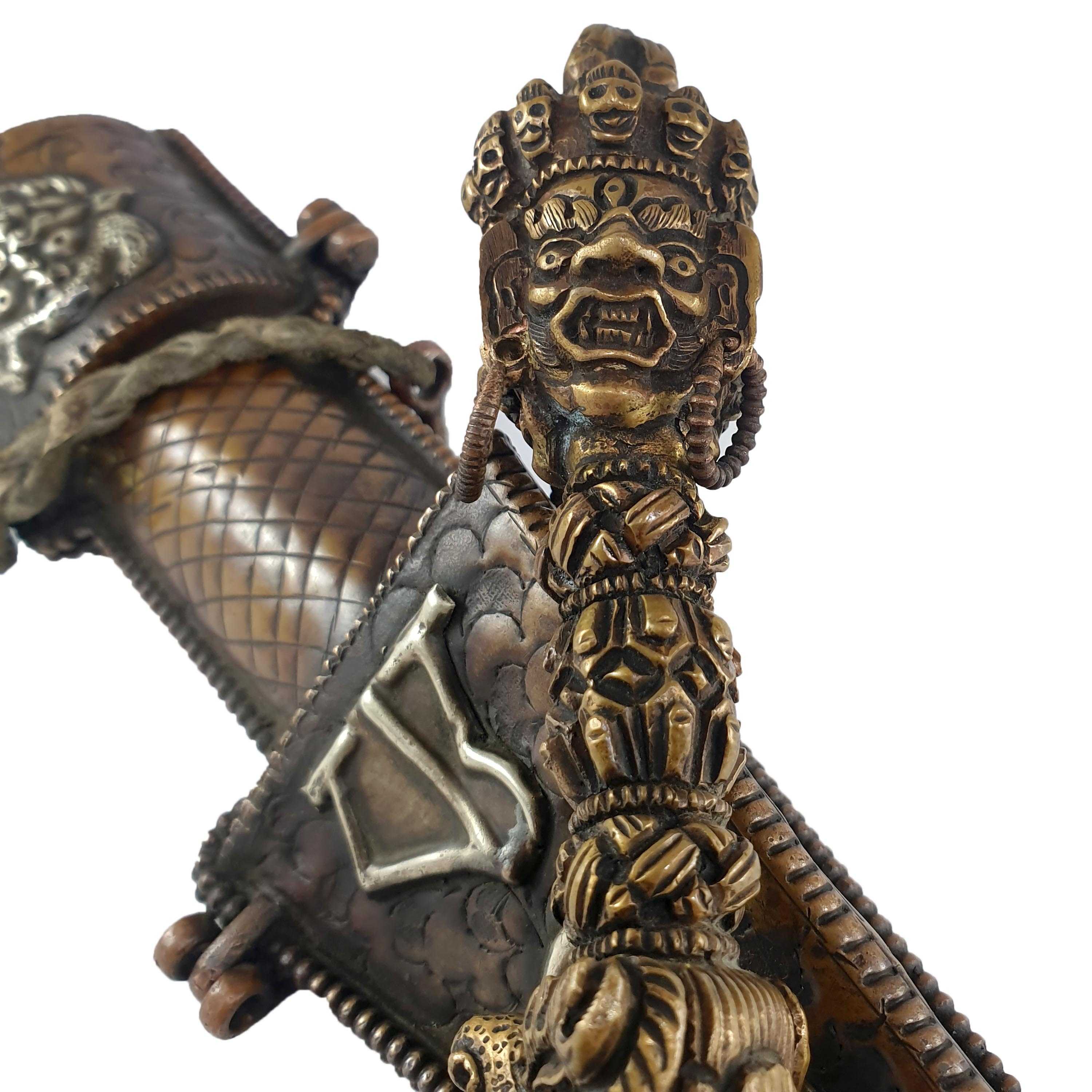 with Metal Cover" title="Tibetan Metal Vajrakilaya - Heruka Phurba
with Metal Cover" title="Tibetan Metal Vajrakilaya - Heruka Phurba  Full Gold Plated" title="Buddhist Phurba,
Full Gold Plated" title="Buddhist Phurba,